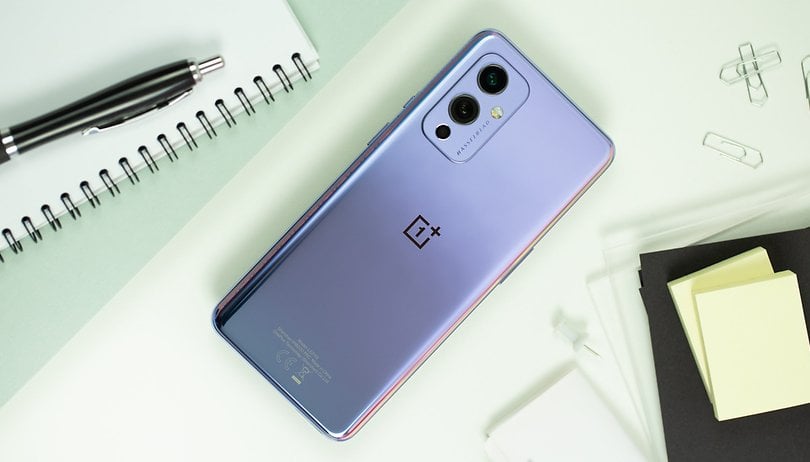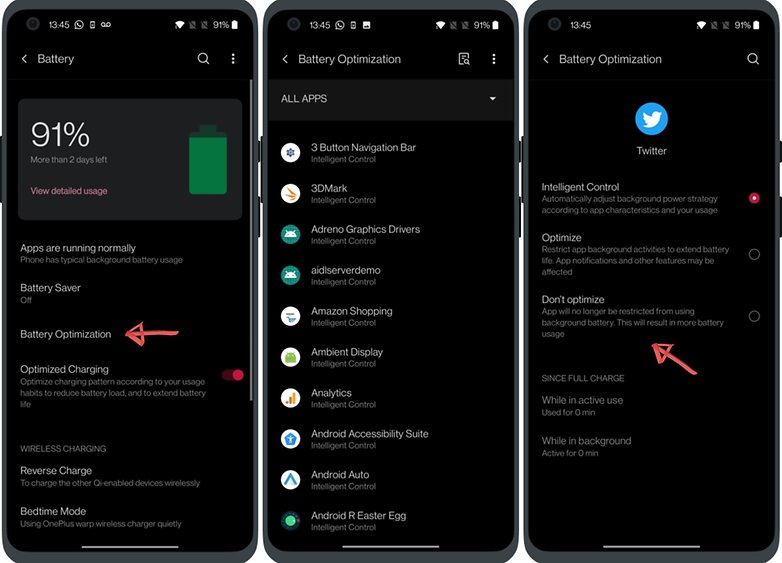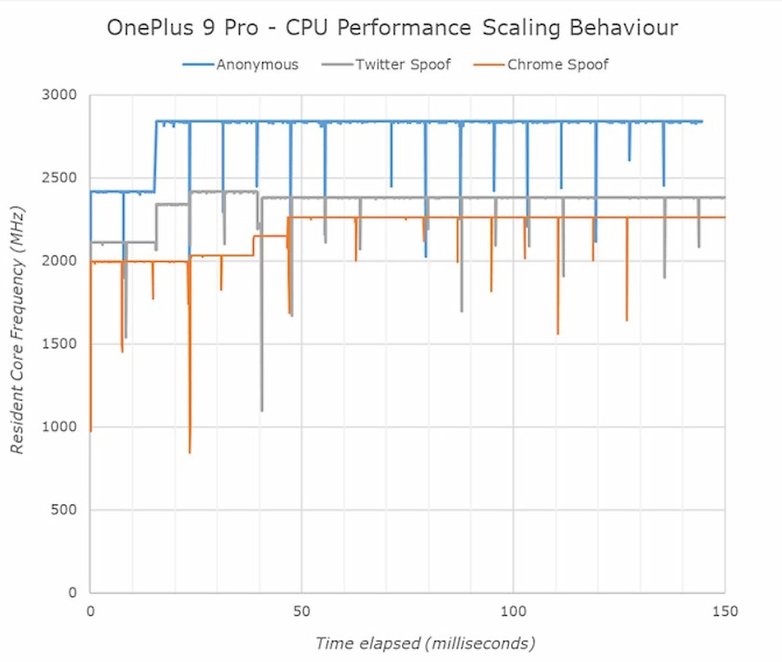Never Throttle: Why did OnePlus restrict the OnePlus 9 and 9 Pro?


OnePlus has experienced turbulent times over the past two days after being accused of slowing down its OnePlus 9 and 9 Pro in some popular apps in order to manipulate benchmark scores. The manufacturer prefers to look at it as software optimization which supposedly preserves the battery life on their smartphones.
- A benchmark test run on the OnePlus 9 Pro showed limiting CPU performance for selected apps.
- OnePlus confirmed that this mechanism aims to preserve battery life by optimizing performance.
- This limitation affects some 300 applications, but not graphics benchmarks or selected games.
- Geekbench 5 has removed the OnePlus 9 and 9 Pro from its listing and accused OnePlus of benchmark manipulation.
First things first though. On July 6, a widely recognized and authoritative specialist site Anandtech discovered serious slowdowns on the OnePlus 9 Pro.
In a long article that was supported by benchmarks and other results, Anandtech demonstrated that the OnePlus 9 Pro did flag some popular apps such as Twitter or Chrome in order to limit the performance of the Snapdragon 888 when running those apps.
Specifically, the OnePlus 9 Pro appeared to disable the Cortex-X1 core when running the flag apps, with the smartphone throttling the Cortex-A78 cores in some cases or even isolating workload on the Cortex-A55 cores.
By doing so, workloads for these apps were considerably slowed down by up to 20% of the SoC's normal performance based on the tests conducted by our colleagues in the industry.
"This resulted in some really weird benchmark scores that paint the OnePlus 9 Pro as an affordable smartphone from the early 2010s with horrible performance," Anandtech's investigation piece read, which I urge you to read.
On July 7, OnePlus responded via a statement explaining that:
'Our top priority is always delivering a great user experience with our products, based in part on acting quickly on important user feedback. Following the launch of the OnePlus 9 and 9 Pro in March, some users told us about some areas where we could improve the devices’ battery life and heat management. As a result of this feedback, our R&D team has been working over the past few months to optimize the devices’ performance when using many of the most popular apps, including Chrome, by matching the app’s processor requirements with the most appropriate power.'
OnePlus takes responsibility for Batterygate
If we were to isolate the actual message from this corporate pretext, we understand that OnePlus did not apologize or admit to their 'guilt' of tampering with benchmark results. The manufacturer simply stated that it has "optimized" the performance of the OnePlus 9 and OnePlus 9 Pro for use with 300 of the most popular apps.
According to OnePlus, this measure is totally voluntary and assumed so since it aimed to preserve the battery life of its smartphones and therefore, improved upon the user experience. It did bring to mind the scandal by Apple in 2017 that revolved around purposeful slowing down of the iPhone, nicknamed Batterygate, which had far more serious implications with repercussions that continue to reverberate until today.
OnePlus' stance has been met with strong reactions, which is not surprising at all. One of the criticisms that surface most often is that the manufacturer should have left the choice to its users to refuse this optimization option, or at least to be able to set exceptions.
This is especially so when one takes into consideration OxygenOS 11's battery optimization function. This mode allows the system to kill apps that run in the background in order to limit battery life, allowing the user to choose which apps do not come under this optimization mode.

Regardless of the intentions behind doing so, it's still heartbreaking for OnePlus, a manufacturer whose EVERY marketing and brand essence is based on its transparency towards its community and clear communication with its users, to end up discussing this slowdown issue under duress, in order to save its own bacon.
An attempt to cheat in benchmarks?
Coming to the other major and perhaps most important criticism raised by Anandtech's investigation, OnePlus mentioned that its optimization involved 300 of the most popular Android applications, including Google Chrome.
The problem is that on benchmarking apps and lesser-known apps, such performance would be deemed as normal as doing so would be maximizing the full power of the Snapdragon 888 SoC.
"What’s evident here, is that this is not a mechanism solely applying to a handful of apps, but applies to pretty much everything that has any level of popularity in the Play Store, including the whole of Google’s app suite, all of Microsoft’s Office apps, all popular social media apps, and any popular browser such as Firefox, Samsung Internet, or Microsoft Edge. Vivaldi was one of the browsers which wasn’t detected and subsequently one of the few I managed to get any reasonable performance out of," the Anandtech article read.

And the media outlet continued that "...only apps which were notably absent from detection were some of the popular games out there, while the likes of Candy Crush were performance limited, Genshin Impact was not. Of course, on top of games, no benchmark app was detected."
Regarding Genshin Impact, it was interesting to note that it is a very demanding game for the SoC and places a large focus on graphics and their smoothness. Candy Crush happens to be a title that would run smoothly on a 2014 Alcatel OneTouch device.
One could argue that OnePlus prefers to throttle Candy Crush since the throttling will impact the gaming experience less than it would on Genshin Impact. On the other hand, one could also say that OnePlus made this choice because the throttling would be less noticeable in this manner.
Geekbench, one of the most popular benchmarks used by reviewers but whose scores are also important to manufacturers and their marketing elements, has removed the OnePlus 9 and OnePlus 9 Pro from its listings after considering the manufacturer's actions to be "a form of benchmark manipulation."
We will also test the other OnePlus handsets in our performance lab to see if these handsets also manipulate performance in the same way. If they do, we will delist them from the Android Benchmark chart.
— Geekbench (@geekbench) July 6, 2021
The company further mentioned that it would conduct its own lab tests to see if other OnePlus models "manipulate performance in the same way."
Conclusion
In conclusion, the only thing that we can say with certainty is that these slowdowns were intentional, and OnePlus is taking responsibility for them. As for the manufacturer's intentions, it will largely depend on the relationship that one has with the brand.
In reality, the logical consequence of any slowdown would normally involve reduced consumption of resources. The battery optimization argument holds when this point is taken into consideration. And as a techie who appreciates OnePlus, I can accept such concessions.
However, it begs the question: Why only apply this mechanism to some applications and not others? Especially when it comes to benchmarks? If the OnePlus 9 Pro is capable of all the power that the Snapdragon 888 SoC offers on Geekbench 5 but is limited in real-world use as well as on the applications that we use on a daily basis, this is indeed a very misleading picture for the consumer.
Finally, if we were to return to OnePlus' statement above, we can read that this performance "optimization" happened after the launch of the OnePlus 9 and 9 Pro, through a post-launch update. However, as our colleagues from XDA Developers pointed out, several tests were conducted under embargo (and therefore prior to the launch) which suggested that the slowdown had already been noted at that point in time.
It wouldn't be the first time an Android manufacturer was caught cheating on benchmarks. OnePlus had already been called out with the OnePlus 5 in 2017 but Xiaomi, Samsung, and Huawei have also been guilty of this sin in the past.
All that remains is, will OnePlus persist and sign off on this bad publicity stunt or will we be treated to an OxygenOS patch to "fix a known bug and improve performance"?
Source: Anandtech, XDA Developers











